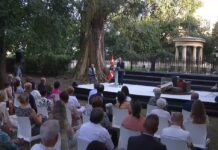José Ramón Larrañaga y Aitor Sarasua, dos investigadores del Departamento de Ingeniería de Materiales de la Universidad del País Vasco (UPV/EHU) han planteado una solución para la creación de implantes óseos hechos de polímeros biodegradables.
Este campo de investigación, en el que se está trabajando desde hace algunos años, busca sustituir en las fracturas oseas las piezas metálicas, que luego hay que eliminar, por otras que se disuelvan cuando no son necesarias, reduciendo el numero de intervenciones que sufre el paciente.Ahí es donde un compuesto de polímero y vidrio (llamado «biovidrio») entra en juego. La idea es dar a los huesos un esqueleto para crecer, para que puedan sanar adecuadamente. A medida que se produce la consolidación ósea, el polímero se disuelve. Los polímeros no son rígidos pero a la vez son lo suficientemente fuerte como para mantener los huesos juntos, y lo que los científicos añaden partículas de vidrio, lo que da la fuerza adicional de polímero.
Pero para fusionar polímero y partículas de vidrio hacían falta altas temperaturas que producen compuestos poco adecuados para el organismo. Decimos hacían falta, porque estos dos científicos vascos, que trabajan en una universidad vasca, han encontrado una solución a través del tratamiento de las partículas de vidrio con un plasma, un gas ionizado, que altera la química de la superficie de las partículas. El resultado es mejor estabilidad térmica para el material de implante, lo que significa que puede ser tratada térmicamente como otros plásticos, siendo seguro para su uso en el cuerpo.
Es cierto que aun no sirve para todos los casos, ni ofrece una respuesta a todas las necesidades. pero es sin duda un apasionante primer paso en una linea de investigación que ofrece no sólo grandes posibilidades, sino también resultados prácticos en estos momentos.
La información ha sido publicada en la publicación técnica Polymer Degradation and Stability y ha tenido reflejo en una web de divulgación científica norteamericana y en otra india. Aparte, claro está, de en nuestra admirada Basque Research.
News Discovery – 2/4/2013 – USA
Glass, Plastic Mix Mends Bones

Years ago I was hit by a motorbike and ended up with a compound fracture of the lower bones of my leg (the tibia and fibula, for aficionados). In order to hold the bones of my leg together as it healed, doctors drove spikes akin to 10-penny nails through my shin and heel and then covered my leg in a cast. I also had to have pins in my right arm to keep the elbow intact. The implants had to be removed, which meant another trip to the surgeon.
(Sigue) (Traducción automática)
—————————–
DNA – 3/4/2013 – India
Now, glass and plastic mix implants to mend broken bones
he idea is to give bones a scaffold to grow on so they can heal properly. As the bones heal, the polymer dissolves. A novel implants designed by mixing glass and plastic could make the steel pins that are often employed today to hold the bones together after fracture a thing of past, and reduce the number of surgeries patients with big breaks have to go through. To make implants that can hold bones together and then dissolve when the implants aren’t needed anymore, scientists have been working on a composite of polymer and glass (called “bioglass”), according to Discovery News.
(Sigue) (Traducción automática)
—————————–
Science Direct – 3/2013 – USA
Effect of bioactive glass particles on the thermal degradation behaviour of medical polyesters
he thermal degradation behaviour of poly(ε-caprolactone) (PCL), poly(l-lactide) (PLLA) and poly(lactide/ε-caprolactone) (PLCL) and of composites of these polymers filled with bioglass particles was investigated by means of thermogravimetric analysis (TGA). According to the activation energies calculated by the Friedman approach, PCL showed the highest resistance to thermal degradation. Addition of bioglass induced a reaction between the ester groups of the polyesters and the SiO− groups present in the surface of bioglass particles which caused a 1.3–1.9 fold decrease in activation energies of the composites with respect to their unfilled polymer counterparts.
(Sigue) (Traducción automática)
—————————–
The Hindu Business Line – 3/4/2013 – India
’Glass and plastic implants to repair broken bones’
Scientists are developing novel implants made up of a glass and plastic mix that can hold bones together and dissolve later when the implants are not needed anymore. The implants could make the steel pins that are often employed to hold the bones together after fracture a thing of past, and reduce the number of surgeries patients with big breaks have to go through. Researchers Jose Ramon Sarasua and Aitor Larranaga, from the materials engineering department of the UPV/EHU-University of the Basque Country, have measured the effect that bioglass has on the thermal degradation of polymers currently used in medicine.
(Sigue) (Traducción automática)
Last Updated on Abr 7, 2013 by About Basque Country
































Información Bitacoras.com…
Valora en Bitacoras.com: José Ramón Larrañaga y Aitor Sarasua, dos investigadores del Departamento de Ingeniería de Materiales de la Universidad del País Vasco (UPV/EHU) han planteado una solución para la creación de implantes óseos hechos de……